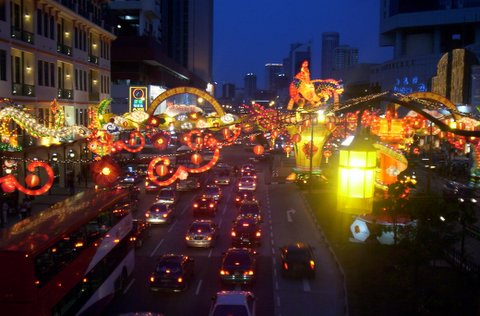Search
Related Articles
Sponsor Ad
Chinese Culture >> Travel Reviews and Photos >> Singapore Chinatown
History of Singapore Chinatown
by: Ong Hui Woo
One of the things to do in Singapore in Singapore is to visit the Chinatown, located at South Bridge Road. The idea of a Chinese Town was first conceived by Sir Stamford Raffles, who is the founder of Singapore. Stamford Raffles developed a plan to group the Chinese immigrants from China together for work and housing. This he feels would create a sense of community among the people of the same race and culture, and help them settle down quickly.

Some researchers have speculated that the shophouses was a fusion of the narrow-fronted houses that are a familiar sight in Amsterdam with the ones of Southern China, especially in Guangzhou and Fujian. ('Shophouses' would be rows of shops that has an upper storey for residence, which usually resides the family and the owner of the shops.) Some see it as a duplicate from Raffles' experience in Malaysia. His instructions to the Singapore Town Planning Committee in 1822 stated that houses should have a uniform type of front each having a verandah of a certain depth, open to all sides as a continuous and open passage on each side of the street. This probably led to the "five-foot way" that the shophouses in Chinatown are famous for.
In the old Singapore Chinatown, many hawkers lined up the busy streets to make a living and provided convenient meals for laborers working near the Singapore River. The streets were also famous for bullock carts, which gave the Chinese name "Niu Che Shui" to the present Chinatown. All kinds of businesses flourished as more Chinese immigrants arrived and more shops and warehouses were built nearby. But many buildings in Chinatown were destroyed during the Japanese occupation of Singapore in the Second World War, and there were some which were torn down because of excessive deterioration of the mostly wooden structures. In recent years, through the government's conservation efforts, many of these buildings have been restored to their former charms, thus offering a unique window to the past, a glimpse at how the early Chinese settlers lived and toiled.
You can see photos of the shophouses and Chinatown at http://www.platimumbooks.com
About the Author:
Singapore Resident www.platimumbooks.com
